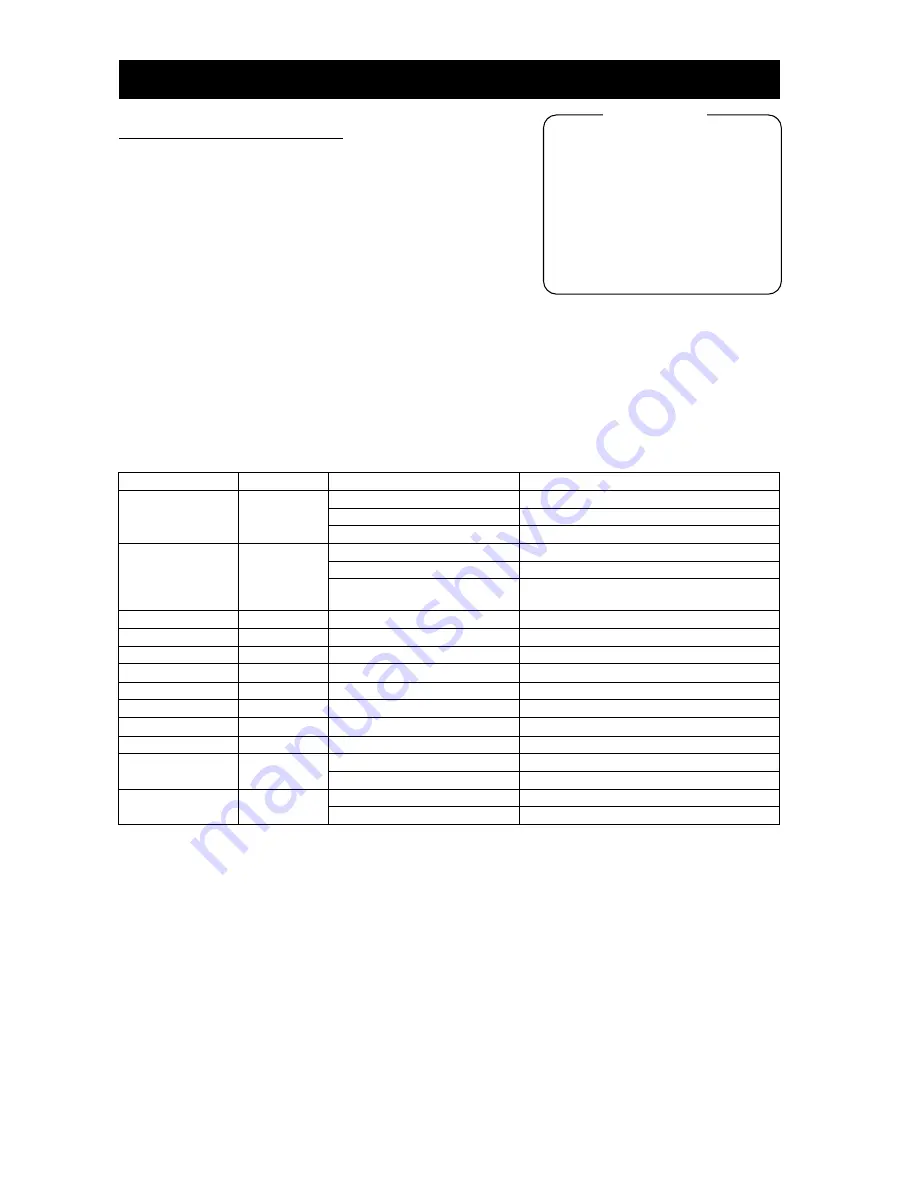
Chapter 4
Explanation of Functions
4-85
4.2.92 Offline auto-tuning function
The offline auto-tuning function allows you to make the inverter
automatically measure and set the motor constants that are required for
the sensorless vector control, 0Hz-range sensorless vector control, and
vector control with sensor.
When using the inverter to perform the sensorless vector control,
0Hz-range sensorless vector control, and vector control with sensor for a
motor of which the motor constants are unknown, measure the motor
constants with the offline tuning function.
When "00" (Hitachi general-purpose motor data) is specified for the
motor constant selection (H002/H202), the motor constants of
Hitachi's general-purpose motors are set as defaults. When you drive a Hitachi's general-purpose motor with the
inverter, you can usually obtain the desired motor characteristics without problems. (If you cannot obtain the desired
characteristics, adjust the motor constant settings as described in Section 4.2.92 or 4.2.93.)
If you intend to use the online tuning function described later, be sure to perform offline auto-tuning beforehand.
The offline auto-tuning function applies only to the 1st motor and 2nd motor controls. Do not apply this function to
the 3rd motor control.
The motor constant data corresponding to the date of one phase of
connection at 50 Hz.
You should use off-line auto-tuning first by using factory default settings as long as you can .
(There are some unusable functions and settings when using off line auto-tuning. Please see the following notices in
detail.)
Item
Function code
Data or range of data
Description
Auto-tuning Setting
H001
00
Disabling the auto-tuning
01
Enabling the auto-tuning (without motor rotation)
02
Enabling the auto-tuning (with motor rotation)
Motor data selection
H002/H202
00
Hitachi general-purpose motor data
01
Automatically tuned data
02
Automatically tuned data (online auto-tuning
enabled)
Motor capacity
H003/H203
0.2 to 75.0 (kW) <0.2 to 160(kW)>
Note)<>:applied for 75 to 150kW
Motor poles setting
H004/H204
2, 4, 6, 8, or 10 (poles)
Auto constant R1
H030/H230
0.000 to 65.53 (Ω)
Auto constant R2
H031/H231
0.000 to 65.53 (Ω)
Auto constant L
H032/H232
0.00 to 655.3 (mH)
Auto constant Io
H033/H233
0.00 to 655.3 (A)
Auto constant J
H034/H234
0.001 to 9999. (kgm
2
)
Base frequency setting
A003/A203
30 to maximum frequency setting (Hz)
DC braking enable
A051
00
Disabling DC braking
01
Enabling DC braking
AVR voltage select
A082
200, 215, 220, 230, or 240
Selectable only for 200 V class models
380, 400, 415, 440, 460, or 480
Selectable only for 400 V class models
When using this function, follow the instructions below.
1)Adjust the settings of base frequency (A003) and AVR voltage select (A082) to the motor specifications. When motor voltage is
other than the altanatives, set as ”motor voltage (A082) “ * ”outputr voltage gain (A045) “ = “motor rated voltage” Please set 00
(constant torque characteristic[VC]) to V/F control mode(A044), and do not set free V/F setting(02). If you set free V/F setting
(A044), auto-tuning function does not work.(see note 6)
2)This function can properly apply to only the motors in the maximum applicable capacity class of your inverter or one class lower
than the capacity class of your inverter. If this function is used for motors with other capacities, correct constant data may not be
obtained. (In such cases, the auto-tuning operation may not be completed. If the auto-tuning operation is not completed, press
the STOP/RESET key. The operation will end with an error code displayed.)
3)If "01" (enabling) is specified for the DC braking enable (A051), motor constants cannot be measured by offline auto-tuning.
Specify "00" (disabling) for the DC braking enable. (The default setting is "00".)
4) If "02" (auto-tuning with motor rotation) is specified for the Auto-tuning Setting (H001), confirm or observe the following:
a) No problem occurs when the motor rotates at a speed close to 80% of the base frequency.
b) The motor is not driven by any other external power source.
c) All brakes are released.
d) During auto-tuning, insufficient torque may cause a problem in the load driven by the motor (for example, a lift may slide
down). Therefore, remove the motor from the machine or other load, and perform auto-tuning with the motor alone. (The
moment of inertia [J] measured by auto-tuning is that of the motor alone. To apply the data, add the moment of inertia of the
H001: Auto-tuning Setting
H002/H202: Motor data selection, 1st motor
H003/H203: Motor capacity, 1st motor
H004/H204: Motor poles setting, 1st motor
H030/H230: Auto constant R1, 1
st
/2
nd
motor
H031/H231: Auto constant R2, 1
st
/2
nd
motor
H032/H232: Auto constant L, 1
st
/2
nd
motor
H033/H233: Auto constant Io, 1
st
/2
nd
motor
H034/H234: Auto constant J, 1
st
/2
nd
motor
A003/A203: Base frequency setting
A051: DC braking selection
A082: AVR voltage select
b046: Reverse run proctection enable
Related code
Summary of Contents for SJ700D-004L
Page 16: ...Contents Appendix Appendix A 1 Index Index Index 1 ...
Page 44: ...Chapter 2 Installation and Wiring 2 23 Memo ...
Page 70: ...Chapter 3 Operation 3 25 Memo ...
Page 248: ...Chapter 5 Error Codes 5 11 Memo ...
Page 256: ...Chapter6 Maintenance and Inspection 6 7 Memo ...
















































